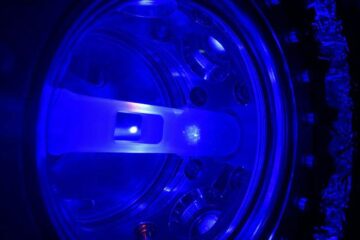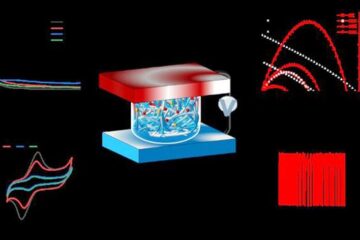New Method to Create Ultrafast 3D Images of Nanostructures

Lensless microscopy with X-rays, or coherent diffractive imaging, is a promising approach. It allows researchers to analyse complex three-dimensional structures, which frequently exist in nature, from a dynamic perspective.
Whilst two-dimensional images can already be generated quickly and in an efficient manner, creating 3D images still presents a challenge. Generally, three-dimensional images of an object are computed from hundreds of individual images. This takes a significant amount of time, as well as large amounts of data and high radiation values.
A team of researchers from Leibniz University Hannover and other universities has now succeeded in accelerating this process considerably. The researchers developed a method in which two images of an object can be taken from two different directions using a single laser pulse.
The images are then combined to form a spatial image – similar to the human brain forming a stereo image from two slightly different images of both eyes. The method of computer-assisted stereoscopic vision is already used in the fields of machine vision and robotics. Now researchers have used the method in X-ray imaging for the first time.
“Our method enables 3D reconstructions on a nanometric scale using a single image which consists of two images from two different perspectives”, says Professor Milutin Kovacev from the Institute of Quantum Optics at Leibniz University Hannover, who is one of the co-authors of the study.
According to the authors, the method will have a significant impact on 3D structural imaging of individual macromolecules and could be used in biology, medicine, as well as in the industry. For example, the protein structure of a virus could be analysed faster and with very little effort.
The protein structure has an immense influence on the function and behaviour of a virus and plays a decisive role in medical diagnoses.
The team of researchers from France, Germany, and Portugal has now published the results of the study in the renowned scientific journal Nature Photonics. The project was funded by Laserlab Europe, a consortium of European laboratories that aims to foster interdisciplinary laser research.
Original article:
Computed stereo lensless X-ray imaging
J. Duarte, R. Cassin, J. Huijts, B. Iwan, M. Kholodtsova, F. Fortuna, L. Delbecq, H. Chapman, M. Fajardo, M. Kovacev, W. Boutu and H. Merdji
Nature Photonics 13
DOI: https://doi.org/10.1038/s41566-019-0419-1
Note to editors:
For further information, please contact Professor Milutin Kovacev, Institute of Quantum Optics, Leibniz University Hannover (Tel. +49 511 762 5286, Email kovacev@iqo.uni-hannover.de).
Original article:
Computed stereo lensless X-ray imaging
J. Duarte, R. Cassin, J. Huijts, B. Iwan, M. Kholodtsova, F. Fortuna, L. Delbecq, H. Chapman, M. Fajardo, M. Kovacev, W. Boutu and H. Merdji
Nature Photonics 13
DOI: https://doi.org/10.1038/s41566-019-0419-1
Media Contact
More Information:
http://www.uni-hannover.deAll latest news from the category: Physics and Astronomy
This area deals with the fundamental laws and building blocks of nature and how they interact, the properties and the behavior of matter, and research into space and time and their structures.
innovations-report provides in-depth reports and articles on subjects such as astrophysics, laser technologies, nuclear, quantum, particle and solid-state physics, nanotechnologies, planetary research and findings (Mars, Venus) and developments related to the Hubble Telescope.
Newest articles

Superradiant atoms could push the boundaries of how precisely time can be measured
Superradiant atoms can help us measure time more precisely than ever. In a new study, researchers from the University of Copenhagen present a new method for measuring the time interval,…

Ion thermoelectric conversion devices for near room temperature
The electrode sheet of the thermoelectric device consists of ionic hydrogel, which is sandwiched between the electrodes to form, and the Prussian blue on the electrode undergoes a redox reaction…

Zap Energy achieves 37-million-degree temperatures in a compact device
New publication reports record electron temperatures for a small-scale, sheared-flow-stabilized Z-pinch fusion device. In the nine decades since humans first produced fusion reactions, only a few fusion technologies have demonstrated…





















